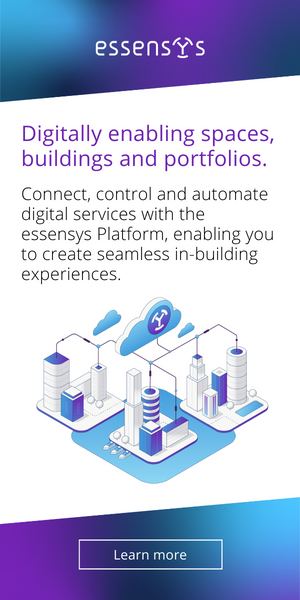How to Align Your Data Strategy With Your CRE Business Strategy

Data science can help real estate investors, owners, managers, and analysts make better, faster decisions. But, in order to fully benefit from the power of data, you must first establish a data strategy.
To successfully drive a strategy for data and analytics excellence, we’ve identified five fundamental elements critical to overcoming barriers and progressing along your transformation journey. This insight explores the first fundamental: aligning your data strategy with your business strategy.
What is a data strategy, and why does it matter?
A data strategy leverages high-quality data to inform business decisions. Gartner describes data strategy as “a highly dynamic process employed to support the acquisition, organization, analysis, and delivery of data in support of business objectives.”
Well-managed data is a strategic asset that delivers the insights needed to determine the right business decisions. Managing data well requires a data strategy that is linked with the business goals it must support. Consider the following best practices that can help to productively align data and business strategies.
How to align your data strategy with your business strategy
Step one: Identify the business goals that data can support
Consider the key business objectives, then identify what data is needed to deliver these. To ensure alignment of data and business strategies, consult with department and unit leads to gain an understanding of their pressing challenges and data needs. This approach gains the buy-in of company leaders and managers whose support is essential for a successful transformation.
Step two: Understand your data sources
When data enters your organization’s information systems from a range of sources, it is essential to understand where these come from to properly access, organize, analyze and protect them.
Your data may come from a variety of places, including:
- Internal information systems and databases
- Cloud storage
- Third-party systems
- IoT sources such as devices and sensors
Conduct a data sources inventory across your complete data landscape. This will allow you to gain insight into the type of data you collect, where it is held, with whom it is shared, and how it is transferred, which will enhance your data accessibility and usability.
Step three: Benchmark your data maturity
As a preliminary step to determine how the data maturity of your business compares with that of others in the CRE industry.
Data maturity is a measurement of the extent of an organization’s capabilities in effectively utilizing data. For example, a high level of data maturity indicates that a business fully integrates data into relevant decision making.
Data maturity is a journey in which an organization becomes more familiar with data and learns to utilize it more productively.
Step four: Establish clear ROI
Once you know what data is needed to achieve your business goals you can determine where the gaps are and what needs to happen. This requires a data strategy detailing how data, people, technologies, and processes will interact to achieve these goals.
Consider these key questions:
DATA
What data is needed? Is this data available, or do you need to find a source for it? Is the data ready to use for analysis? If not, what is required?
PEOPLE
What people are required – the skills and experience needed to execute the strategy?
TECHNOLOGIES
What technologies are necessary to use the data in the way you need? Are existing tools adequate for the task?
PROCESSES
What processes must be in place to collect, prepare, store, analyze and share the data? Do you need to improve existing processes or build new ones?
A data strategy should identify and prioritize the projects that will deliver the highest return to your business strategy. Consider what key activities need to happen, who will be responsible for these, what changes the business will need to make and the cost to make these happen. The answers will be the foundation of your formal data strategy.
Step five: Introduce a change management process
Executing a data strategy involves a significant change in company culture and internal processes. This requires a change management process to ensure people understand why change is happening, how this benefits them and how it impacts their work.
Effective change management for a data strategy features four important characteristics:
- Change starts at the top. The leadership team is committed to and invested in transforming the business with data. They promote the culture needed to advance organizational change.
- A data transformation steering team that has the confidence and attention of the company’s leadership so that initiatives receive the priority they require to succeed. This should be a cross-functional group of directors and managers responsible for setting the vision for the overall transformation and meeting SMART (specific, measurable, achievable, relevant, time-bound) goals.
- Collaboration that efficiently connects employees across business units as well as with external networks – all in support of the data strategy.
- Communication and transparency that keeps everyone informed about progress, provides access to information and resources, shares feedback, and addresses issues before they become barriers.
Next steps
You can now start to align your data strategy with your business strategy and identify the insights needed to make informed business decisions. Just remember these five best practices:
- Identify the business goals that data can support
- Understand your data sources
- Benchmark your data maturity
- Establish clear ROI
- Introduce a change management process
Now that you have started aligning your strategies, you are on your way in your data transformation journey.
This Week’s Sponsor
Altus Group’s One11 Advisors is a leading advisory firm, with dedicated teams focused on the commercial, residential and fund management sectors. With decades of cumulative experience at leading real estate companies, our consultants bring a unique perspective to our clients. We provide a 360° view of the real estate industry with a deep understanding of operations and technology solutions.
Read Next
 5/15/2025
5/15/2025
Tech, Talent and Transformation: 2025 Digie Finalists Announced For 27 years, Realcomm has presented the Digie Awards to acknowledge companies, real estate projects, technologies, and individuals that have advanced the commercial real estate industry through the strategic use of technology, automation, and innovation.
 5/15/2025
5/15/2025
Empowering Space Management with Data-Driven Visualization For effective CRE space management, it’s critical to centralize lease data, maximize rental square footage (RSF), improve energy efficiency and reconfigure spaces to meet changing needs.
 5/8/2025
5/8/2025
The AI-Powered Workplace Evolution: Redefining the Business Landscape In today's rapidly evolving business environment, the fusion of Artificial Intelligence (AI) and Workplace Management is revolutionizing the way organizations approach workspace optimization and operational efficiency.
 3/27/2025
3/27/2025
The Convergence of Edge Computing, Cloud, and AI in Building Automation and Smart Buildings In the built environment, we have seen the convergence of Operational Technology (OT) and Information Technology (IT), later expanding to include Workplace Technologies (WP).





%20(1)%20(1)%20(1).png)








